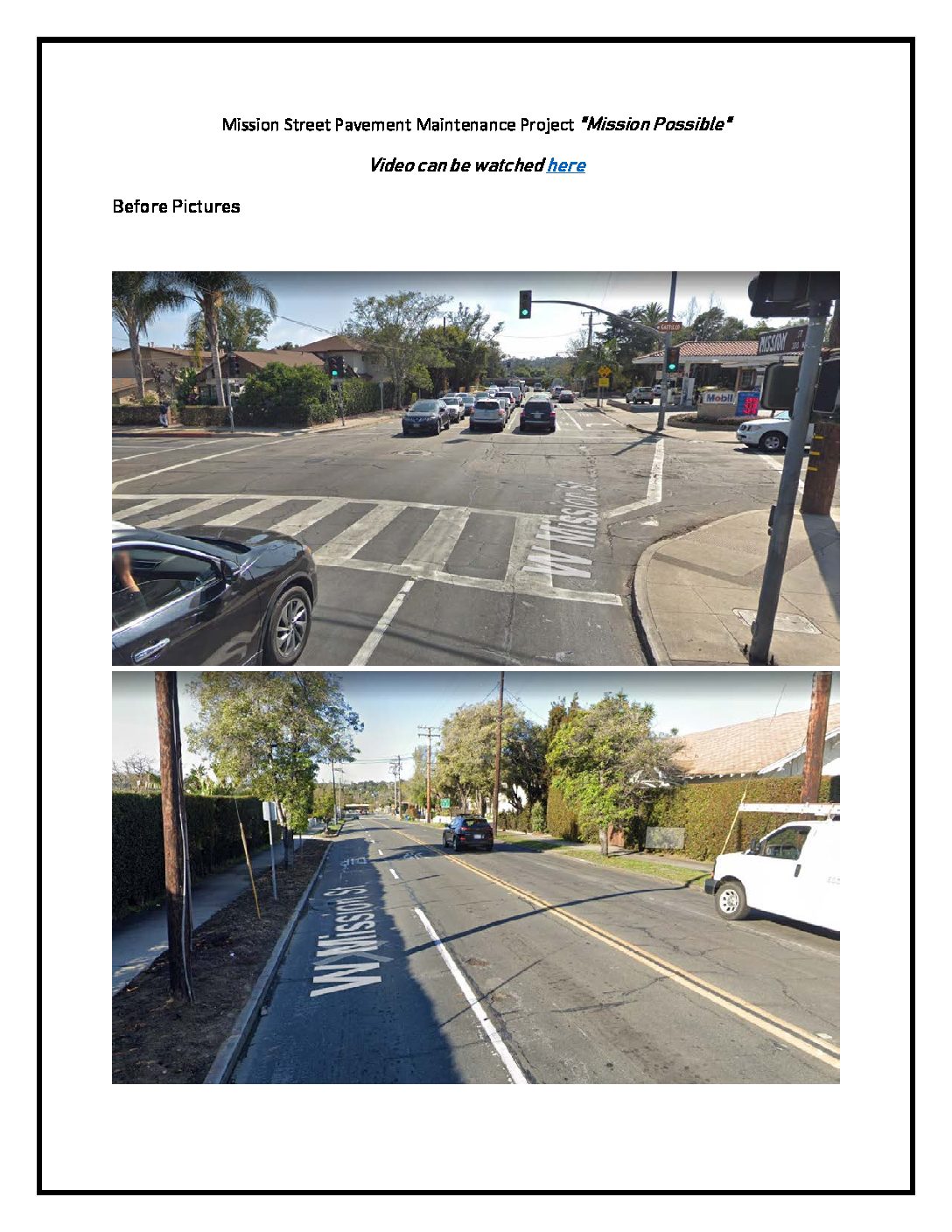Mission Street Pavement Maintenance Project “Mission Possible”
Location
Mission Street from US 101 to State Street, and Los Olivos Street from Laguna Street, over the Mission Canyon Bridge to the City limits
City or County Responsible for Project
Santa Barbara
Author
Ashleigh A. Shue
City Of Santa Barbara, Public Works, Engineering Division
630 Garden Street Santa Barbara CA 93101
(805) 564-5424
Project Description
In the summer of 2019, the City of Santa Barbara undertook an extensive rehabilitation of one of the City’s busiest arterial streets, Mission Street between Highway 101 and State Street. The rehabilitation included replacing failing traffic signal conduits, improving pedestrian accessibility by upgrading access ramps and repairing sidewalks, repairing curbs and gutters, repaving the roadway, and planting new street trees. In preparation for disrupting one of Santa Barbara’s heaviest travelled corridors, the City launched the “Mission Possible” campaign, inspired by the movie, “Mission Impossible,” in an effort to raise community awareness about the upcoming project. The traffic volumes on Mission Street vary between 13,000 and 27,000 vehicles per day along the corridor, with 500-700 pedestrians using each intersection daily. These five blocks (about ½ mile) were in need of significant pavement maintenance, with a Pavement Condition Index (PCI) in the 50’s, which is considered “poor.” Mission Street was notorious within the community for its narrow travel lanes, “dips” at intersection cross-gutters, and poor pavement condition. Failing, corroded underground traffic signal conduits were replaced to improve traffic signal reliability. New conduit and fiber optic cable were added to interconnect the traffic signals, enabling the corridor to be timed more efficiently. Major upgrades to the pedestrian facilities along the corridor were also completed, particularly at the intersection of Mission and De La Vina Streets. All of the access ramps were reconstructed at this intersection and the crossings were straightened and shortened by realigning the curb lines. A total of 14 access ramps were reconstructed and three existing access ramps were retrofitted along the corridor to meet ADA requirements. Damaged curbs, gutters, and cross-gutters which created the notorious “dips,” were reconstructed prior to grinding and overlaying the entire roadway. The City’s construction management team worked collaboratively with the contractor, seeking opportunities to expedite the work and limit disruption to the public. Complex phasing was implemented to minimize disruptions to the public and adjacent businesses as much as possible. The team had near daily communication with the adjacent business owners and custom signage was provided to indicate that businesses were open during construction. The City’s creative “Mission Possible” campaign was extremely effective in increasing community engagement and awareness, and as a result, very few complaints were received during the three-month construction duration that impacted thousands of community members, residents, and visitors. This Project had long been identified as a high priority need within the City, but funding for such a comprehensive project hadn’t been available prior to Senate Bill 1 “RMRA” funding, which contributed approximately $1.5M of the total $2.5M construction cost. An impossible mission made possible.




Add Comment